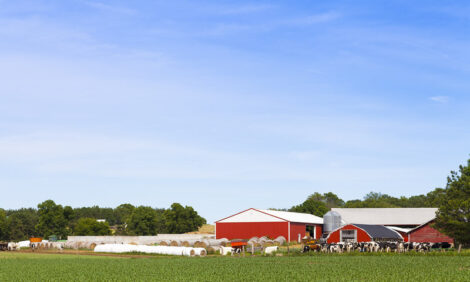



Global Dairy Top-20
Rabobank's new Global Dairy Top-20 shows the recent growth of Japan and China in the world dairy sector.The Top-10 is still headed by Nestle, and dominated by players from the mature markets of Europe and the US.
However Japanese contender Meiji Dairies moved up three places to number 11, and Yili from China shot into the rankings for the first time at number 17.
Changing diets and strength in numbers are key to understanding the growth of demand in the Asian markets, according to Mark Voorbergen of Rabobank’s Food & Agribusiness Research and Advisory.
“The Chinese government is helping create a whole new generation of dairy consumers by promoting a school milk programme. So Chinese dairy companies will have ample opportunity to increase sales simply by keeping up with domestic market growth.”
Supply and demand
Putting consumption into perspective, Mark contrasts the 300 litres of dairy products consumed per person per year in the Netherlands with the current 20 litres per person per year in China.
“We expect the Chinese market to grow along the same lines as Japan or South Korea, from zero levels five years ago to a maximum of 50 litres per person per year.”
But volume growth is only happening in developing regions like China, South East Asia and selected markets in the Middle East, Africa and Latin America. For the developed markets of Europe, the USA and New Zealand, the main growth challenge is to introduce new characteristics – often related to health and convenience - to standard dairy products that the consumer is willing to pay for.
On the supply side, land availability and climate will prove a challenge for Asian and South American companies moving forward. Decisions on whether to rely on imported raw materials or on developing a fresh supply chain locally or elsewhere will all influence the global market balance.
What’s hot and what’s not?
Brazil is tipped for the Top-20 next year, assuming successful completion of the new conglomerate made up of Itambé, Centro Leche, Confepar, Mineiras Cemil and Mines Milk. Mexico’s Grupo Lala is also bubbling under, following its acquisition of National Dairy Holdings last year.
Fragmentation in the German market and the slow pace of consolidation between Nordmilch and Humana Milchunion has knocked Germany out of the Top-20 entirely this year. Bel, the French producer of ‘La Vache qui rit’ came in at number 19 but Mark Voorbergen expects it may lose its position once compatriots Entremont and Sodiaal complete their merger.
Although Japanese dairy consumption has probably reached its peak at around 60 litres per person per year, Meiji Dairies (11) and Morinaga (14) were able to improve their position over competitors thanks to the relatively stable yen and local prices.
Newcomer Tine (20) probably benefited from the same advantages in the relatively protected Norwegian dairy sector. With over the half the companies on the Top-20 list in its client portfolio, Rabobank continues to build on its reputation as the leading global Food and Agribusiness bank.



